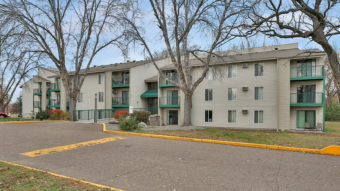The cranes dotting the landscapes of Chicago and other major U.S. cities signal that commercial building is still booming. Despite the unfettered volume of new construction, however, the commercial real estate industry is keeping a wary eye on construction costs that continue to rise.
The main drivers of rising costs—labor and materials—are not expected to relent anytime soon. In fact, Chicago area construction labor costs are among the highest in the country, and across the country contractors are having a difficult time staffing projects with skilled labor. As for materials, the administration’s recently enacted tariffs are making steel, aluminum and lumber even more expensive than they were before.
Developers, contractors, investors and others involved in the CRE industry are all looking for cost-saving solutions. This shared search for value was the impetus for Skender’s “101 Ways to Build Smarter” recently-published e-book. The book draws from the best practices we’ve gathered from more than six decades of experience to help our industry partners reduce waste and increase value, without sacrificing quality.
By focusing on ways to bring down the costs of labor and materials in ways they can control, developers and contractors can counterbalance external market pressures. Drawing from the 101 report, decision-makers should focus on the following seven areas.
1) Understanding the real meaning of efficiency
Increased efficiency means reduced waste, time and materials. It doesn’t necessarily mean cost savings on individual items, but does ultimately result in reduction of the overall cost of construction.
2) Quality labor, quality product
Seek out qualified and respected subcontractors who will enhance the quality of the project, and THEN negotiate price—reversing the process of working up from the lowest bid.
3) Partner with subcontractors to find cost-saving opportunities
Subcontractors—those who do the hands-on work—should be invested in reducing cost. Engage and incent individual professionals in the process, rather than dictating all the decisions. When you’ve developed a strong subcontractor relationship, consider signing a multi-project deal to save across the board.
4) Bulk buying of materials
If you’re building a multi-unit residence or multiple buildings, material procurement strategies will generate significant savings. Also, the more you can standardize materials or features across units, the more you’ll save.
5) Lock in pricing to hedge against rising interest rates
In an inflationary environment, lock in materials and equipment costs as soon as possible. As prices escalate, it often pays off to pre-purchase materials to avoid price hikes.
6) Think outside in
The core and shell comprise the bulk of the cost in large office and multifamily buildings, so early structural and façade studies will allow the contractor to effectively analyze and evaluate system alternatives. Knowing your façade and building envelope early will generate considerable savings down the road.
7) Re-think jobsite waste: Recycle, reuse and re-invest
When you have waste on a jobsite, consider ways you can re-use it, or at least find ways to recycle it and reduce the cost of removal.
By looking at the big picture, the teams leading construction projects can find ways to balance budgets without bringing down quality, even in the face of labor and material costs that are trending upwards. Don’t expect to save on every line item—in many cases, the trade-off in the caliber of the work or building element is not worth it. Instead, make thoughtful, large-scale choices, foster subcontractor relationships and spread costs between multiple projects to make each building’s bottom line work.
About the author
Clay Edwards is a vice president and partner at Skender, a full-service general contractor that has renovated millions of square feet of award-winning interior workspace environments.



